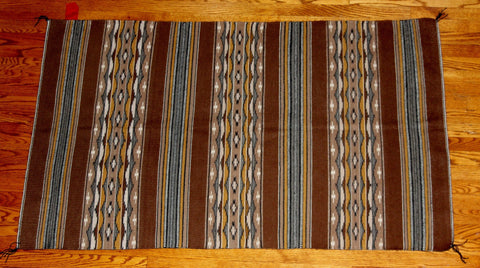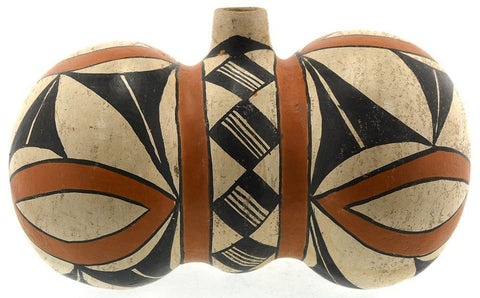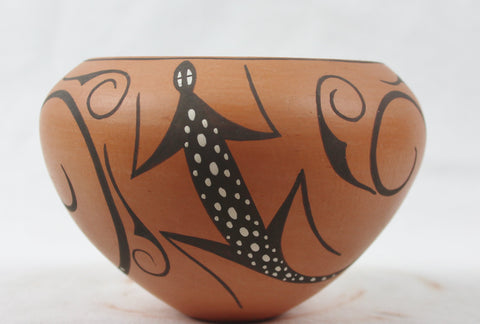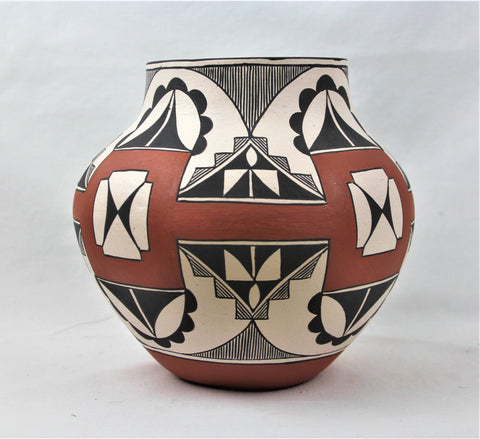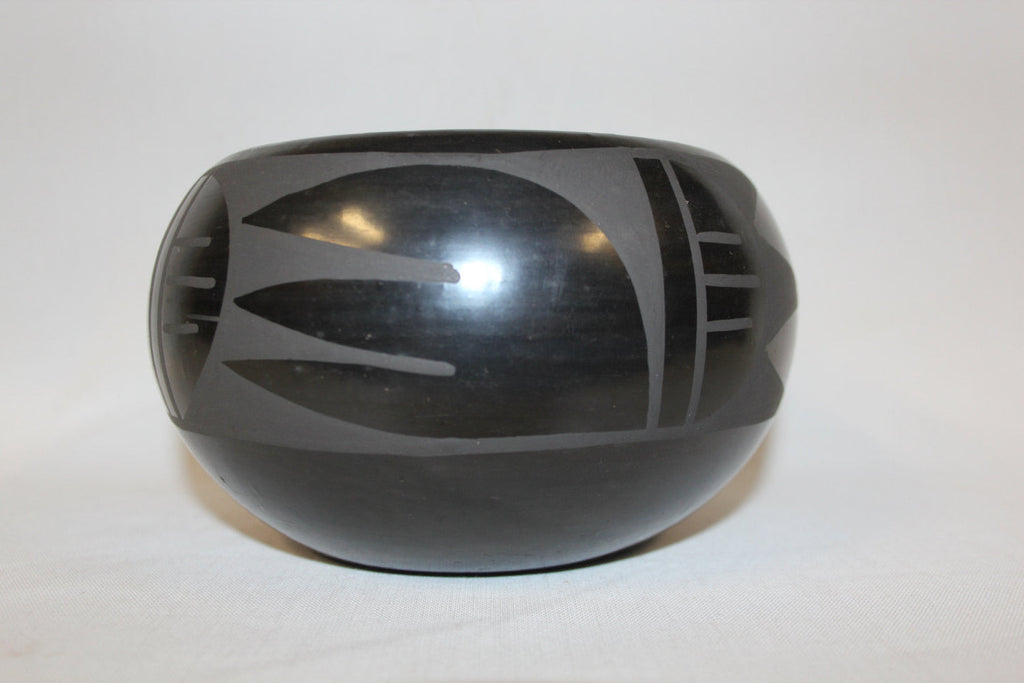
Native American Bowl : Native American Santa Clara Bowl, signed by Minnie #108 Sold
$ 180.00
Native American Bowl
108. Description: 1980's 90's matte on black geometric design has minor surface rubs and scratches. Signed Minnie Santa Clara. 3.5" X 6".
Born 1931 Maria D. Vigil, an artist with Santa Clara and Pojoaque lineage active making pottery since 1955, comes from a family of potters. "Minnie" has been winning awards at Indian Market in Santa Fe as early as 1975.
Her favorite designs are rain clouds, rainbows, sky bands, clouds and bear paws. Her polished red globular forms are often decorated with these multi-colored painted designs.
Her work is illustrated in nearly every book describing Santa Clara potters. In 1985 her pottery was exhibited in New York City at the Sid Deusch Gallery along with pottery by Margaret Tafoya. (Source: Savvy Collector)
Minnie Vigil is one of a family of talented potters. Her sisters, Lois Gutierrez de la Cruz, Thelma Lois Gutierrez de la Cruz, Thelma Talache, and Gloria (Goldenrod) Garcia, are potters of distinction. Minnie has won awards at Santa Fe Indian Market for years in recognition of her fine workmanship. She specializes in Polychrome wares. Some of her pottery is slipped in red clay and stone polished and some is slipped in matte tan clay and not polished.
Minnie Vigil has produced exceptional pottery for a long time. She is recognized as one of the finest potters at Santa Clara Pueblo who is producing Poly'chrome wares. She typically signs her pieces as Minnie Santa Clara. (Source: Adobe Gallery)
A History of Pueblo Pottery:
Pueblo pottery is made using a coiled technique that came into northern Arizona and New Mexico from the south, some 1500 years ago. In the four-corners region of the US, nineteen pueblos and villages have historically produced pottery. Although each of these pueblos use similar traditional methods of coiling, shaping, finishing and firing, the pottery from each is distinctive. Various clay's gathered from each pueblo's local sources produce pottery colors that range from buff to earthy yellows, oranges, and reds, as well as black. Fired pots are sometimes left plain and other times decorated most frequently with paint and occasionally with applique. Painted designs vary from pueblo to pueblo, yet share an ancient iconography based on abstract representations of clouds, rain, feathers, birds, plants, animals and other natural world features.
Tempering materials and paints, also from natural sources, contribute further to the distinctiveness of each pueblo's pottery. Some paints are derived from plants, others from minerals. Before firing, potters in some pueblos apply a light colored slip to their pottery, which creates a bright background for painted designs or simply a lighter color plain ware vessel. Designs are painted on before firing, traditionally with a brush fashioned from yucca fiber.
Different combinations of paint color, clay color, and slips are characteristic of different pueblos. Among them are black on cream, black on buff, black on red, dark brown and dark red on white (as found in Zuni pottery), matte red on red, and poly chrome a number of natural colors on one vessel (most typically associated with Hopi). Pueblo potters also produce un-decorated polished black ware, black on black ware, and carved red and carved black wares.
Making pueblo pottery is a time-consuming effort that includes gathering and preparing the clay, building and shaping the coiled pot, gathering plants to make the colored dyes, constructing yucca brushes, and, often, making a clay slip. While some Pueblo artists fire in kilns, most still fire in the traditional way in an outside fire pit, covering their vessels with large potsherds and dried sheep dung. Pottery is left to bake for many hours, producing a high-fired result.
Today, Pueblo potters continue to honor this centuries-old tradition of hand-coiled pottery production, yet value the need for contemporary artistic expression as well. They continue to improve their style, methods and designs, often combining traditional and contemporary techniques to create striking new works of art. (Source: Museum of Northern Arizona)
----------------
View the other items in my shop: http://www.etsy.com/shop/CulturalPatina?ref=shopsection_shophome_leftnav

